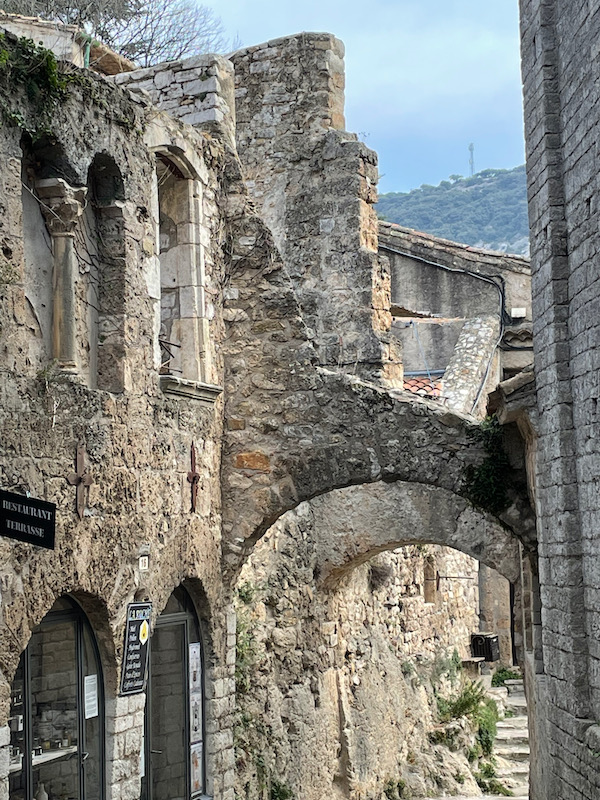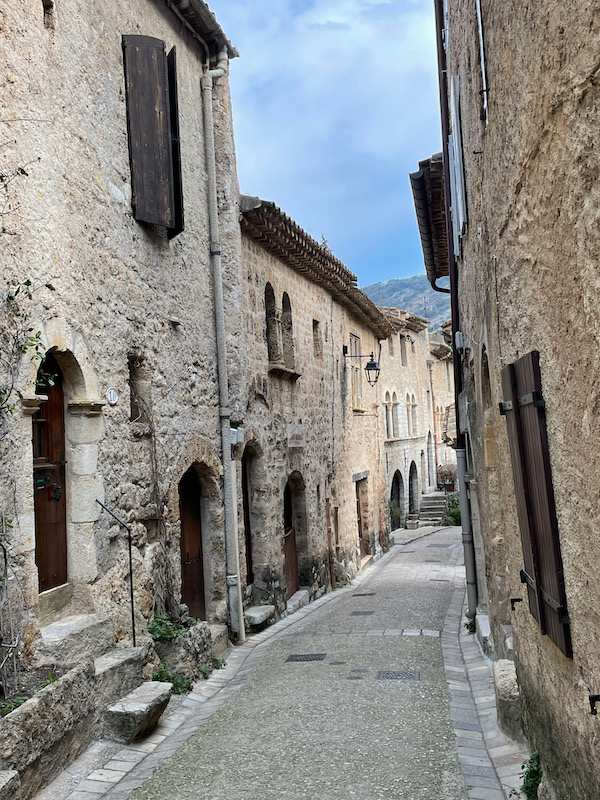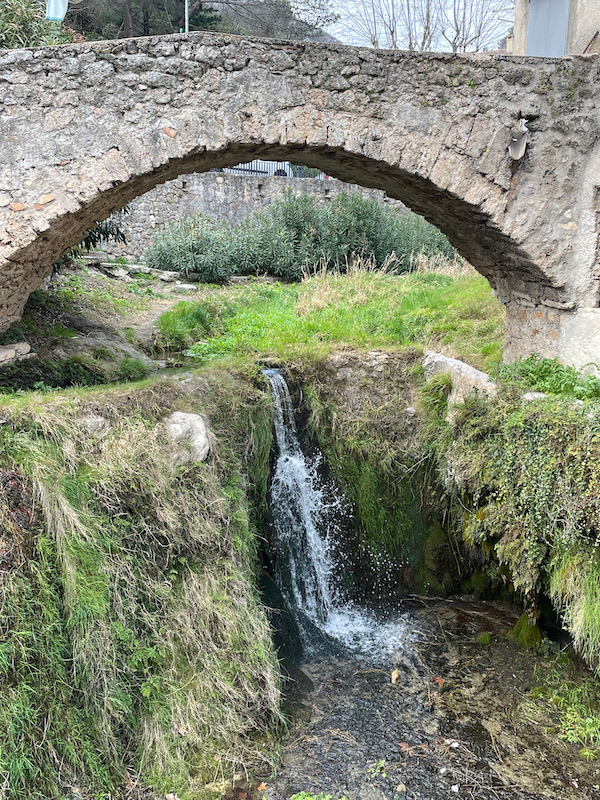Our Blog - Cote d'Azur - Saint-Guilhem-le-Desert, France
In the heart of the Hérault Gorges is the medieval village of Saint-Guilhem-le-Désert, which is listed as one of the Most Beautiful Villages in France. These "Plus Beaux Villages" are somewhat hit-and-miss ... some are really nice with restaurants and cafes, and other are almost entirely dead. I didn't have high hopes for this one, since the population is under 300 people. Obviously, going in off-season is always iffy since some places are lively during tourist season but absolutely dead in the off-season. But, thankfully, it was actually a very nice little village with several restaurants and cafes that were open.
The name is a little interesting because there is no "desert" anywhere nearby. In 804, Saint Guillaume (at that time the Count of Toulouse) founded an abbey in a place in the Hérault valley that was away from any human presence, hence the name "desert". The village developed around the abbey. During the French Revolution, the town temporarily was named Verdus-le-Désert (to remove religious names) and then the name was returned.
The houses are snuggled tightly together along basically 2 alleyways that run from this main square down to the Herault River. You can see how the town has quite a few high rocks around it, including the one with the Giant's tower (the square tower in the middle of the 2nd picture) and the ruins of the Château de Verdun (the ruins on the top of that rock).
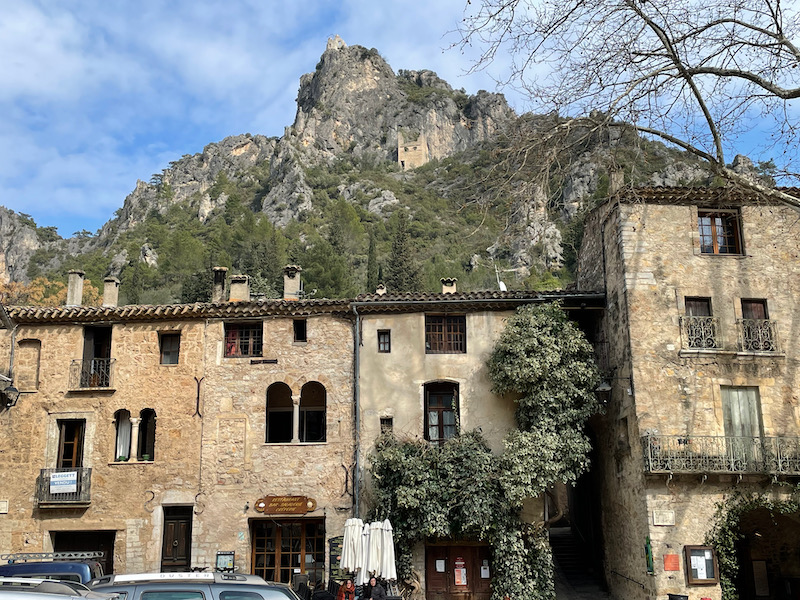
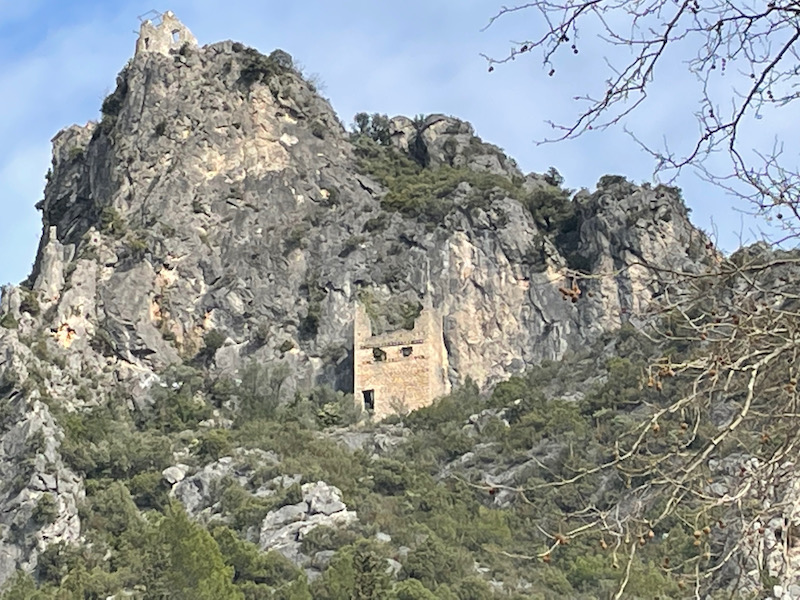
As I mentioned, the Abbaye de Gellone was founded in 804. The church dates from the 9th to the 11th centuries and houses a medieval altar. You enter the abbey from the main town square. Nothing actually remains from the original 9th-century church. Most of the church that remains dates from the 11th-century with the exception of part of the crypt (which you'll see below) and the 15th century bell tower.
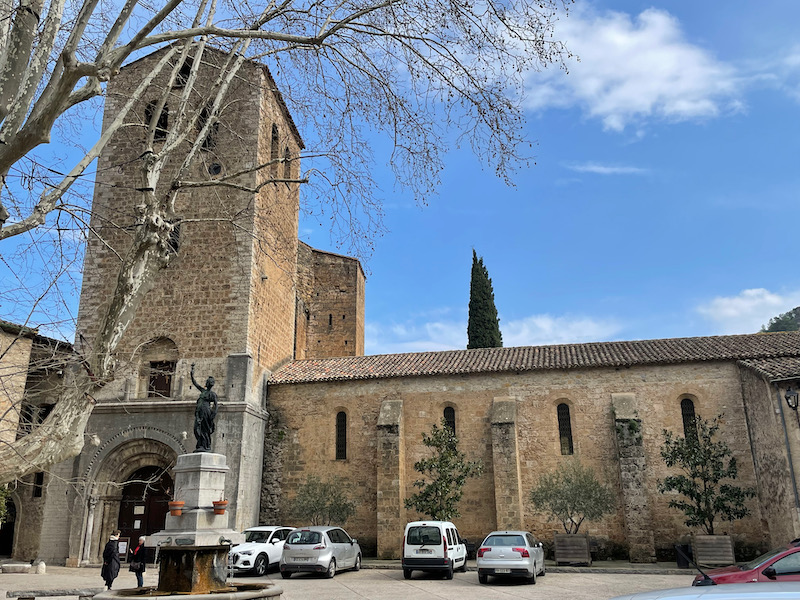
The nave is quite narrow, as you can see, with a very tall ceiling with Romanesque rounded arches. There are also 2 side aisles, also very narrow.
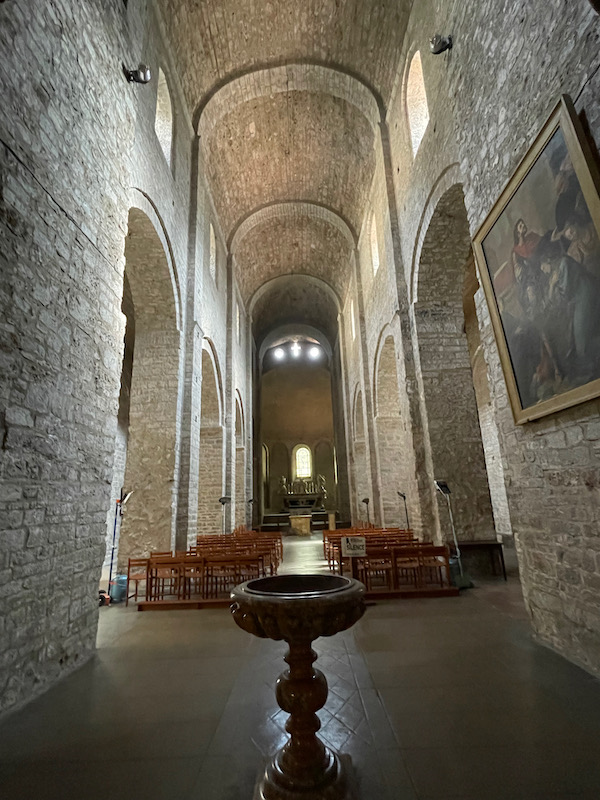
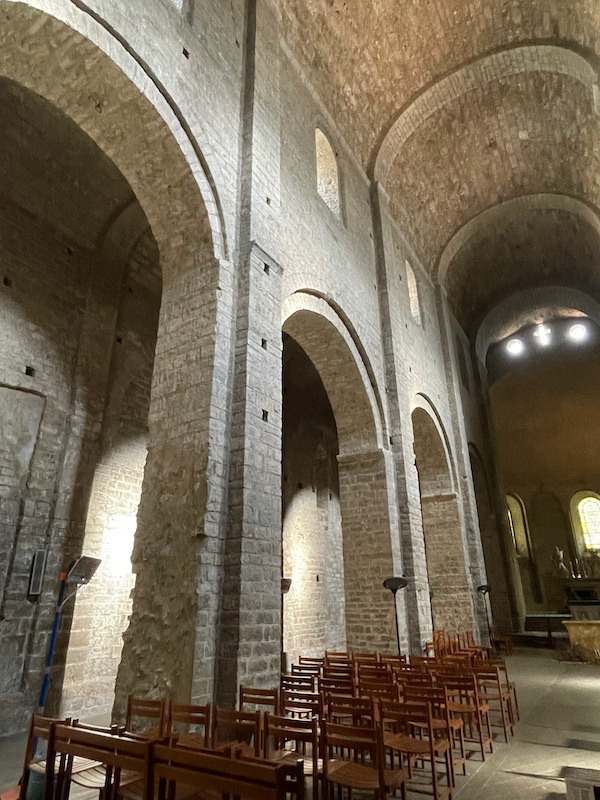
The organ was built in 1789 and is one of only three 18th-century historic organs in the Hérault department. The cabinet is made of walnut with the carvings from a wood called "linden".
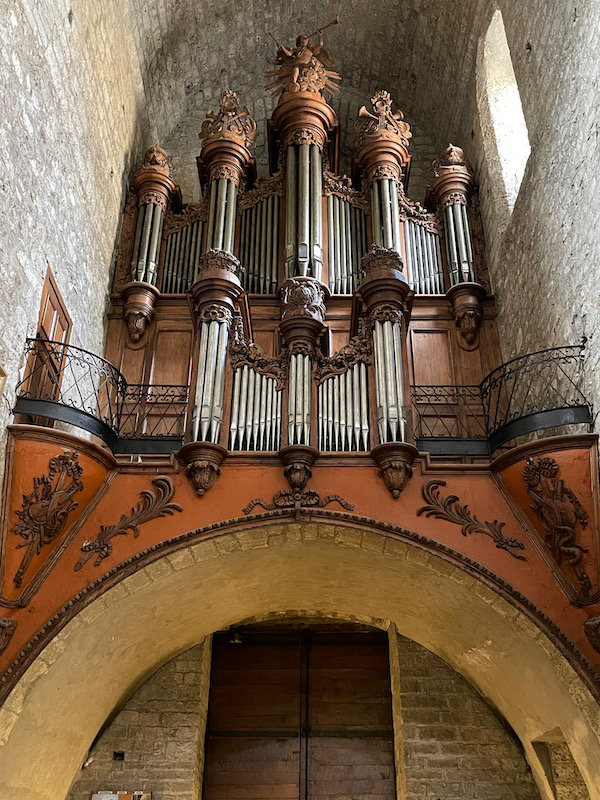
The medieval baptismal font was originally in another church and moved here when that church was destroyed.
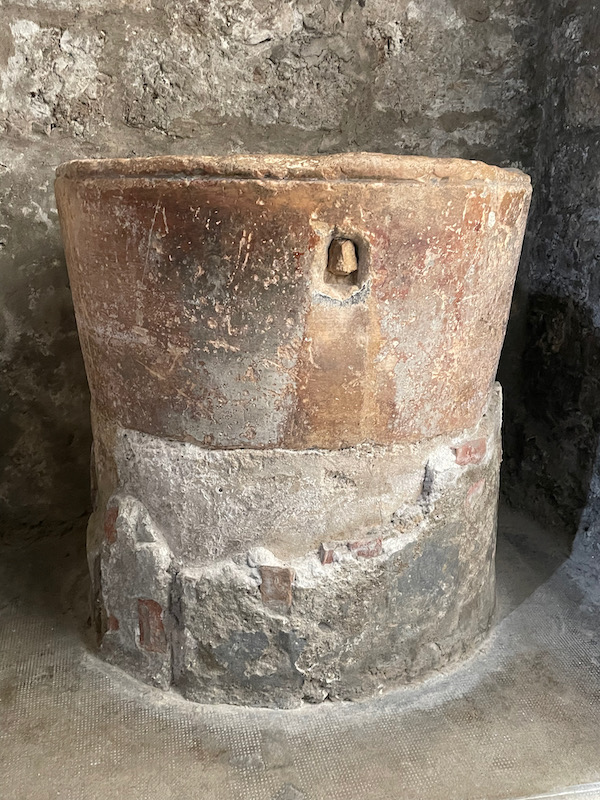
Shortly before the French Revolution, a new high altar was installed in the church and the existing altar (the altar of Saint Guilhem that you will see next) was dismantled. This 18th-century high altar has multiple colors of marble on the base. In the middle is a tabernacle decorated with cherubs, surrounded by two large angels and 6 copper candlesticks from the 18th-century.
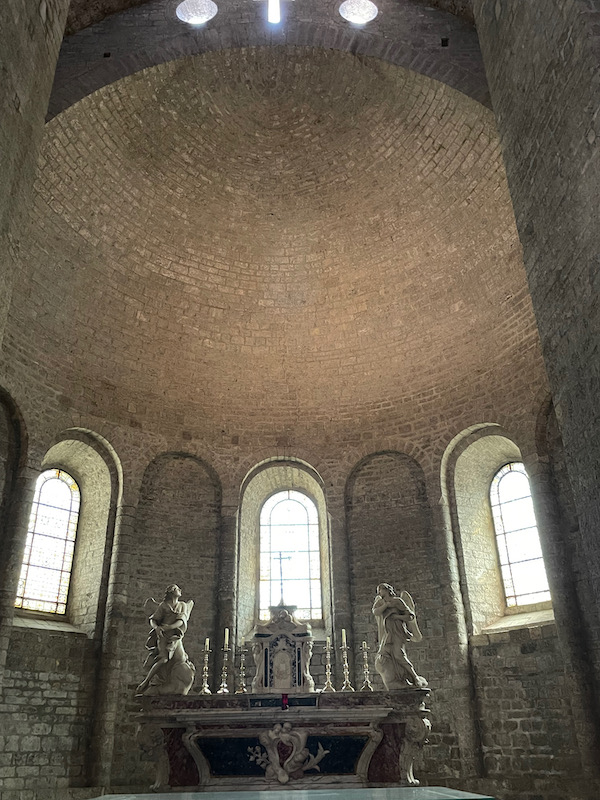
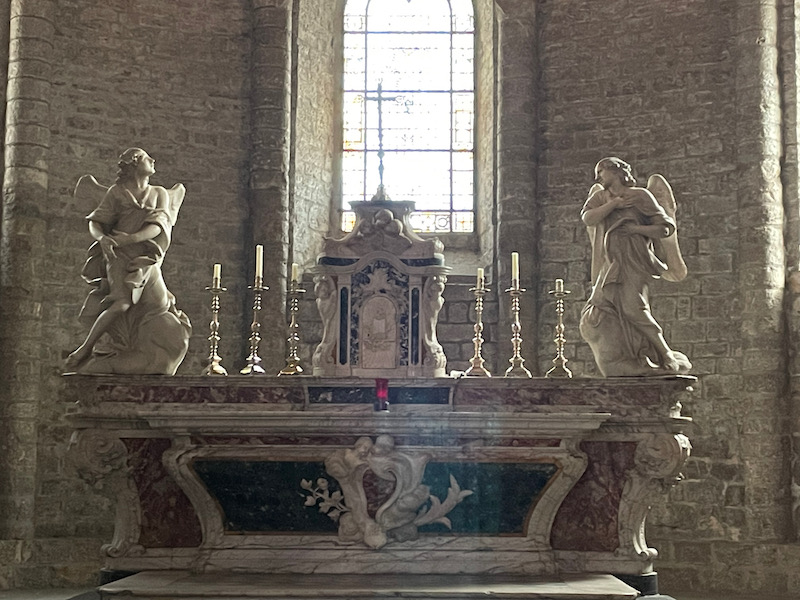
The altar of Saint Guilhem is probably one of the most unique altars that I have seen. Historians date the altarpiece to the 12th century. It was dismantled in 1679 and the slabs placed on the front of a new high altar. It has been dismantled and reassembled multiple times since then, and a restoration was done between 2013 and 2018. It is made of carved white marble on top of black limestone. The two parts show Christ in Majesty and the Crucifixion.
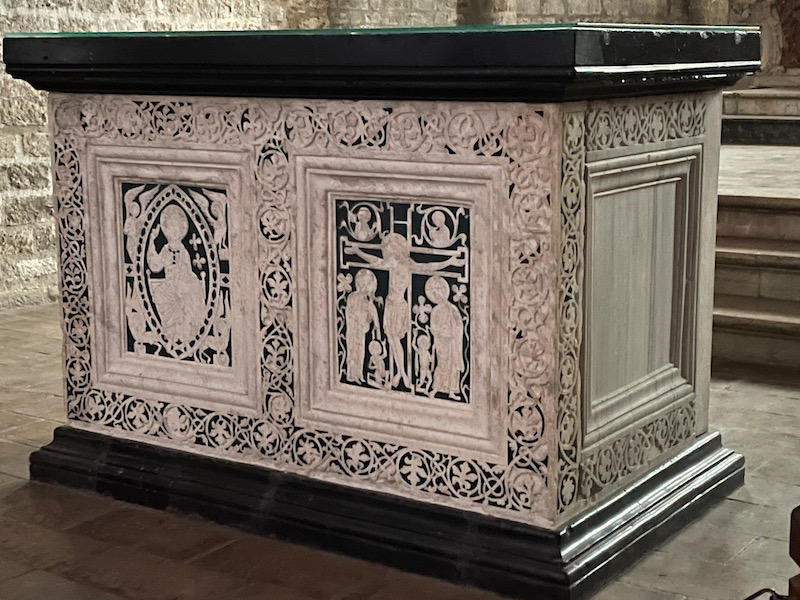
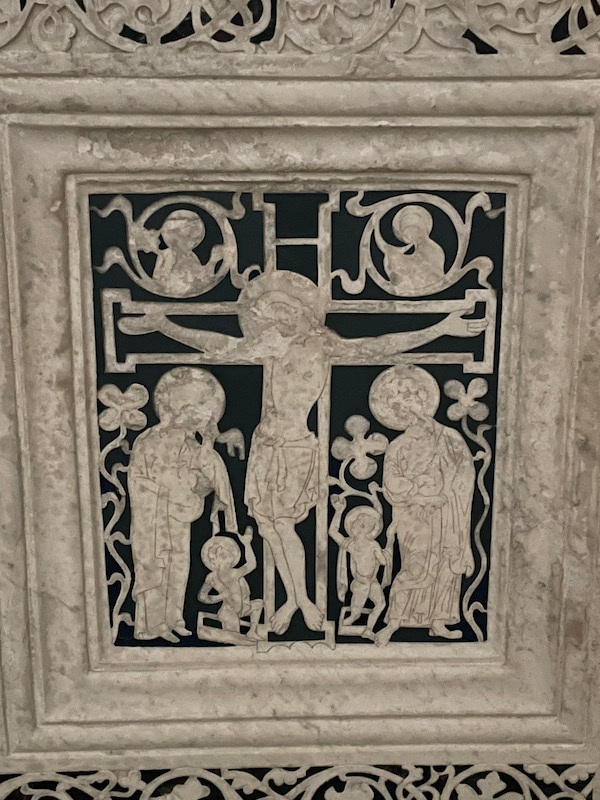
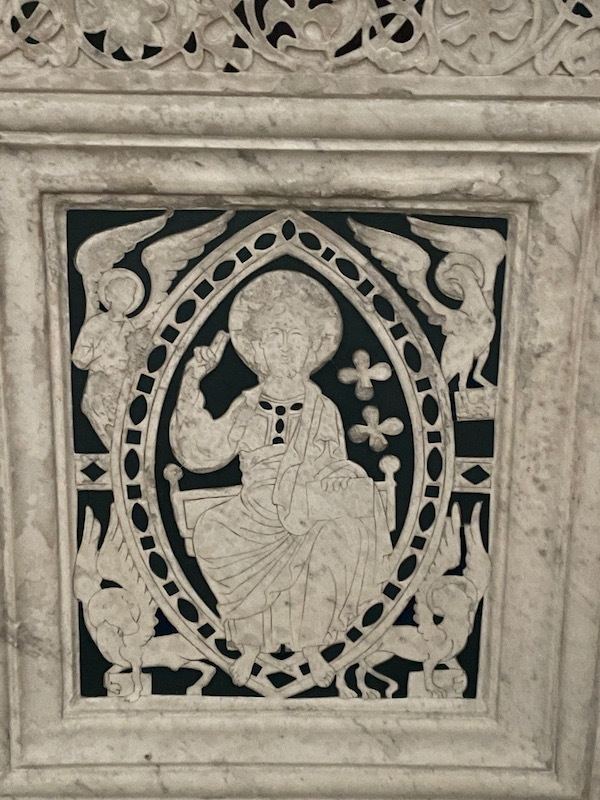
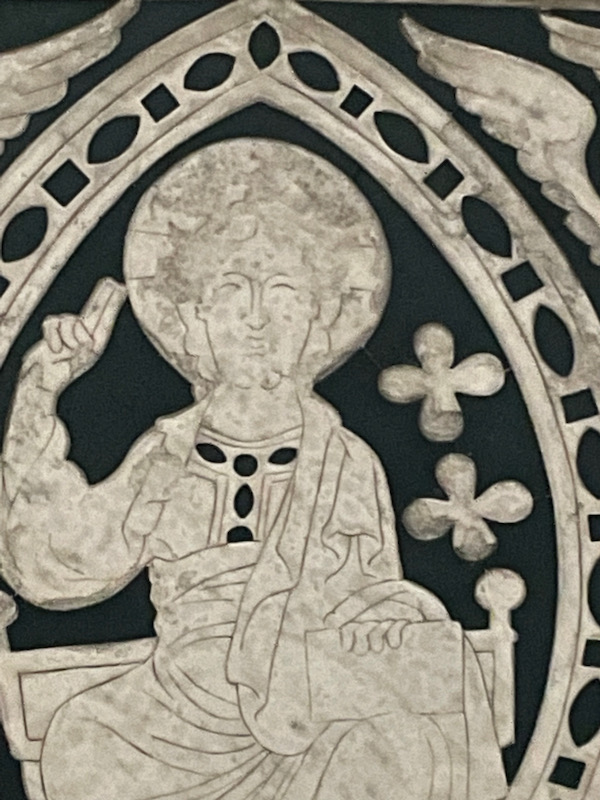
In 1962, the vestiges of the apse of the 10th-century church was discovered and cleared.
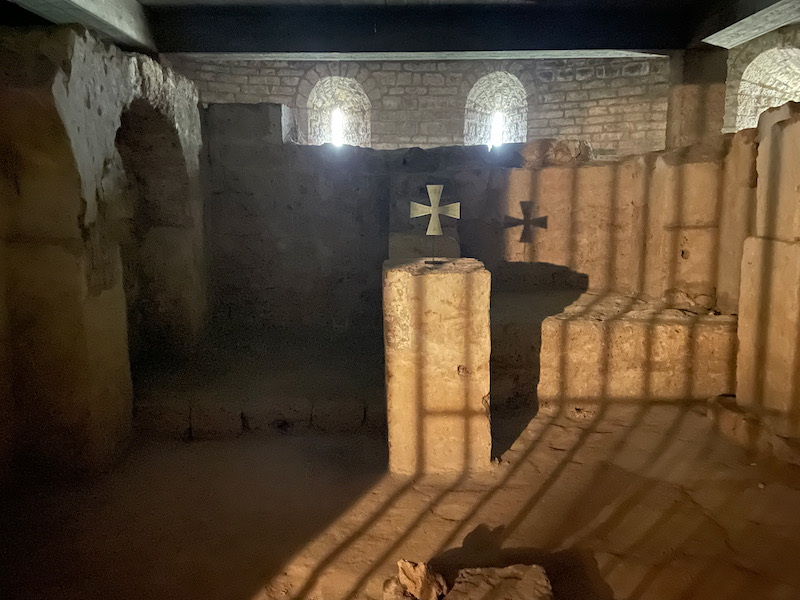
Moving outside, into what was the cloister, you can clearly see the different parts of the church. The bell tower to the left and then the very tall nave section. In front of the nave is the lower, side-aisle section, and then at the bottom, the cloister gallery with the double-arched openings. The majority of the cloister was built in the 11th and 12th centuries with additional work in the 14th and 15th centuries. The last picture is of the apse of the church as seen from town.
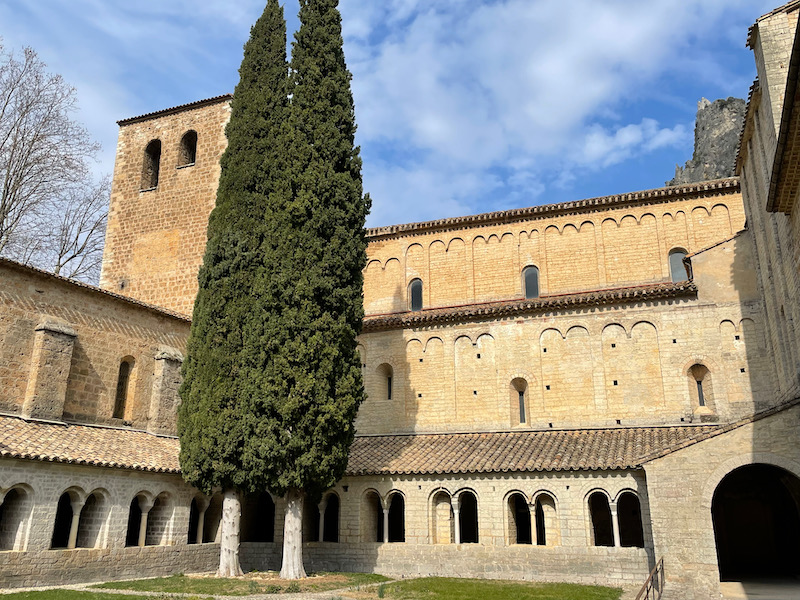
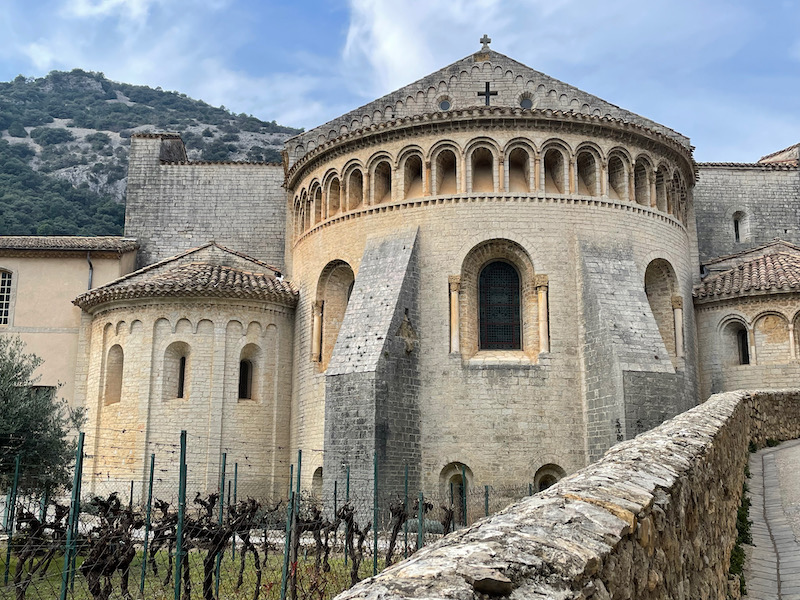
Within the cloister, there were a few paintings that were pretty well-preserved for as old as they are.
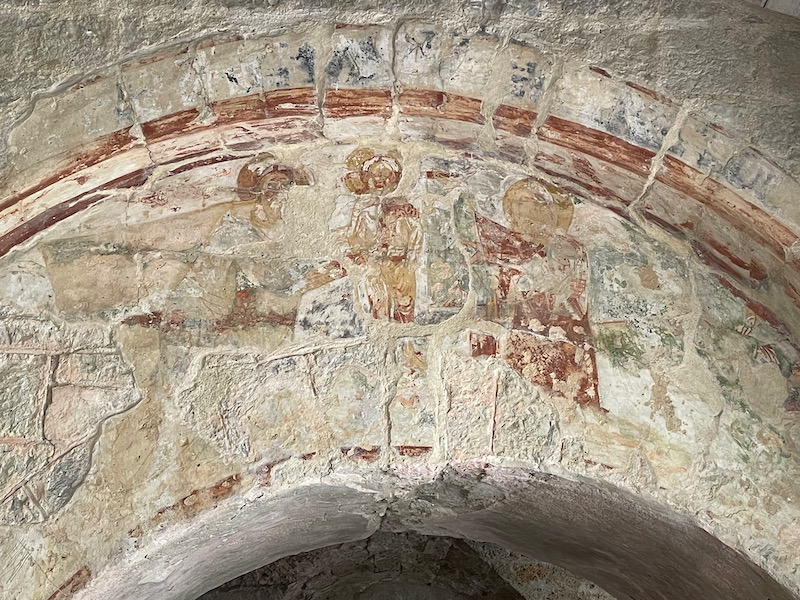
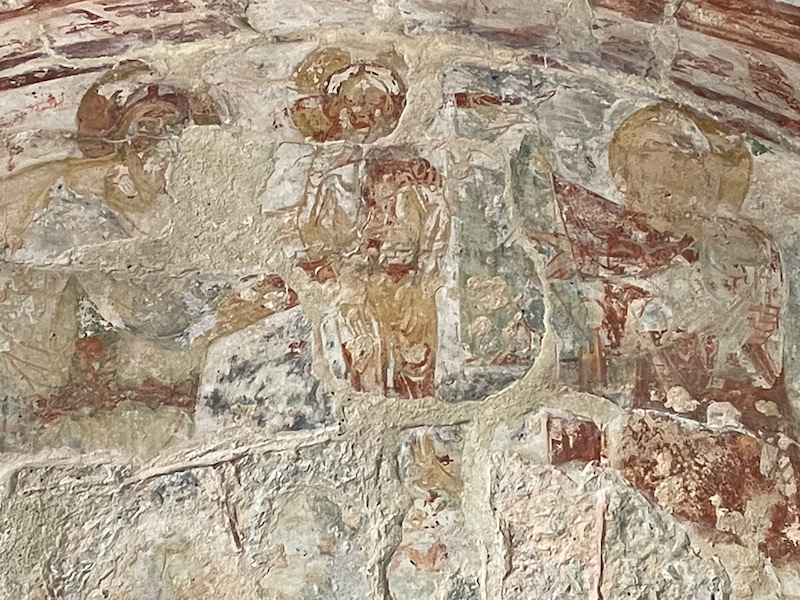
Back in town now.... just a little view of the small alleys that run on either side of a stream that goes through town, ending with a little waterfall that then flows into the Hérault River.
